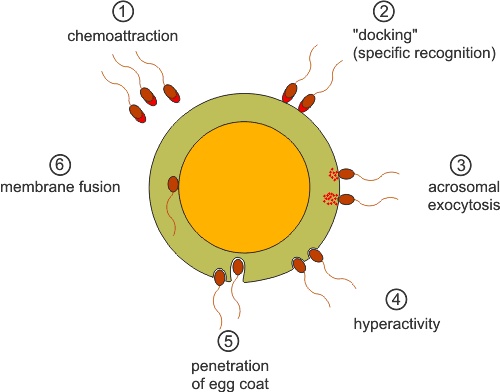Table of Contents
Introduction
- Sperm attraction, or the movement of sperm towards eggs, has been documented in various species including cnidarians, mollusks, echinoderms, amphibians, and urochordates.
- This attraction is typically achieved through chemotaxis, or the following of a chemical gradient secreted by the egg.
Species-Specific Chemotaxis
- The mechanisms of chemotaxis differ among species and the chemotactic molecules used also vary between species.
- For example, in sea urchins, sperm motility is acquired after being spawned and activated by a change in pH.
- Direction for the sperm is provided by small chemotactic peptides, such as sperm-activating peptides (SAPs).
Resact in Arbacia punctulata
- One such SAP is resact, a 14-amino acid peptide found in the egg jelly of Arbacia punctulata sea urchins.
- Resact readily diffuses from the egg jelly into seawater and can attract Arbacia punctulata sperm to the area of injection.
- Sperm have receptors in their cell membranes that bind to resact and activate latent guanylyl cyclase in the cytoplasmic side of the receptor.
- This increases the production of cyclic GMP and allows the influx of calcium ions into the sperm tail, which activates the dynein ATPase and stimulates flagellar movement.
- Sperm sense the SAP gradient by curving their tails and swim up the concentration gradient until they reach the egg.
- Resact functions as both a sperm-attracting peptide and a sperm-activating peptide.
Conclusion
- Sperm attraction is achieved through chemotaxis in various species and can be facilitated by sperm-activating peptides such as resact in Arbacia punctulata sea urchins.
